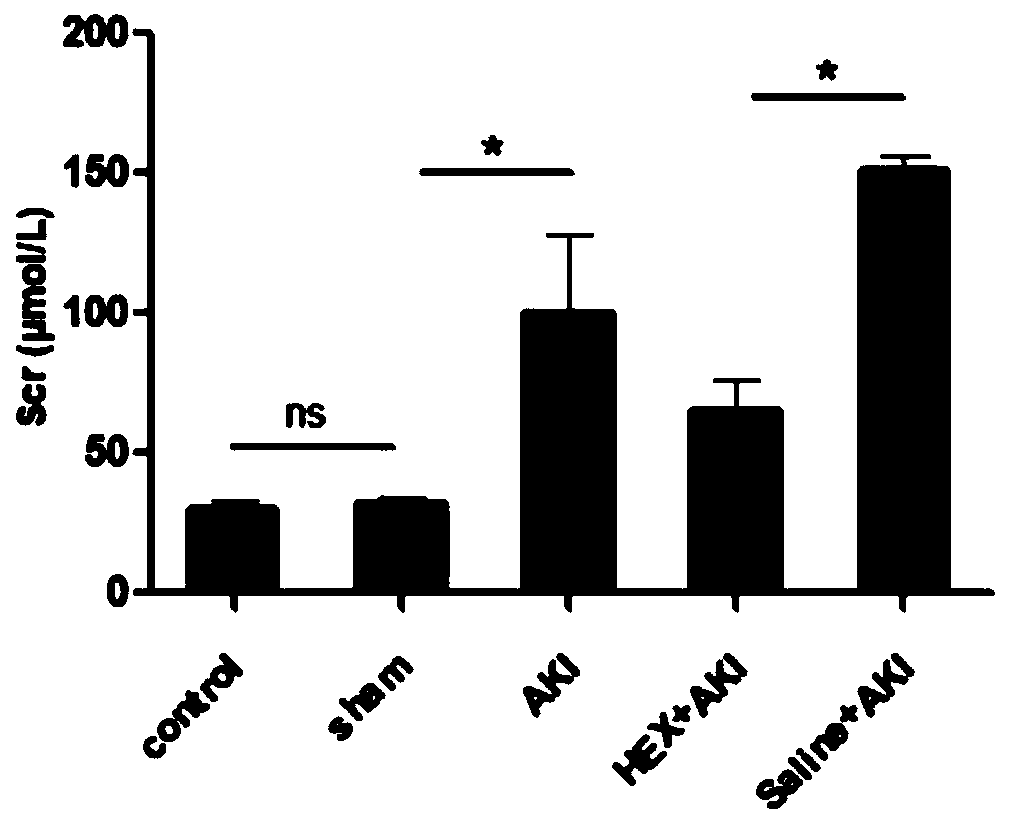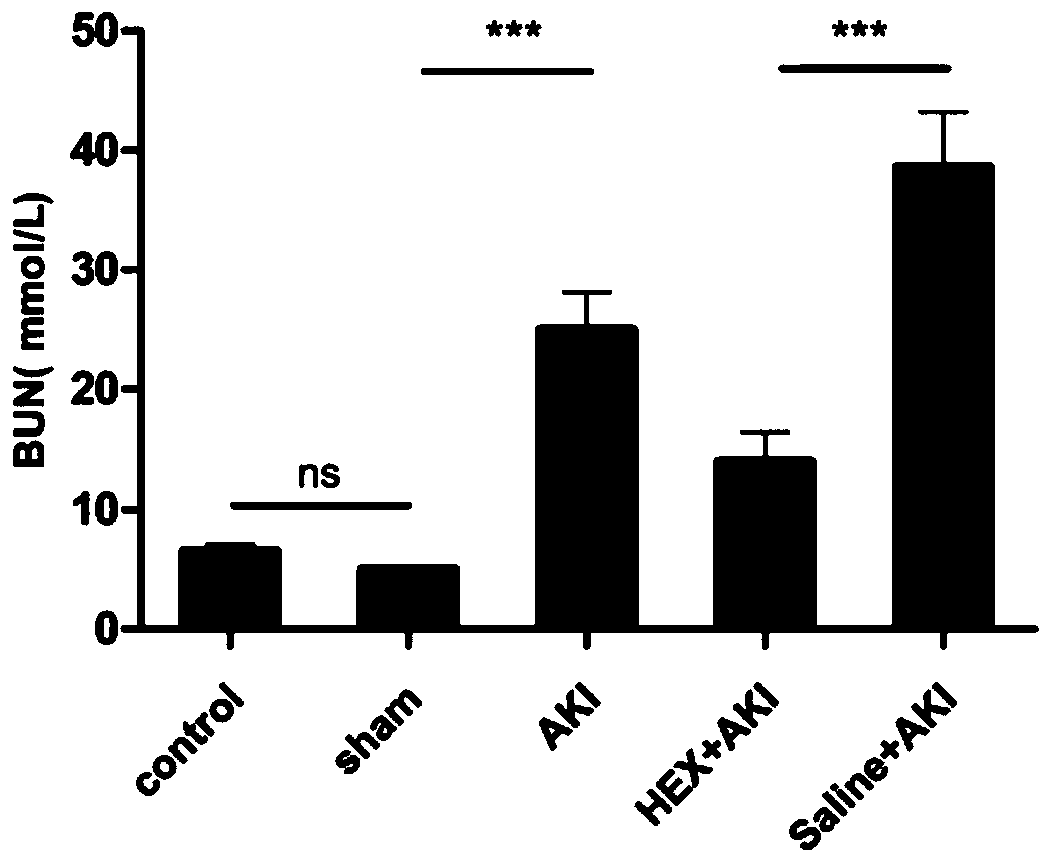Application of hexarelin to preparing kidney ischemia reperfusion injury protecting drugs/drug combinations
A technology of ischemia-reperfusion and composition, which is applied in the field of biomedicine and can solve problems such as lack of strong evidence for drug effects
- Summary
- Abstract
- Description
- Claims
- Application Information
AI Technical Summary
Problems solved by technology
Method used
Image
Examples
Embodiment 1
[0025] Embodiment 1 Hexarelin pretreatment
[0026] Select 30 healthy male SPF grade SD rats aged 8 weeks and weighing 250-300g to raise them in isolated cages with independent air supply, the temperature is controlled at 21°C ± 2°C, the relative humidity is controlled at 50% ± 15%, day and night The cycle is 12h, normal diet. They were randomly divided into 5 groups, namely normal group, sham operation group, acute kidney injury (AKI) group, acute kidney injury after hexarelin (HEX+AKI) group, acute kidney injury after normal saline (Saline+AKI) groups of 6 each. Rats in the drug treatment group and the normal saline control group were treated with drugs by intraperitoneal injection 7 days before modeling. According to the experimental grouping, Hexarelin was given to the Hex+AKI group and the Saline+AKI group respectively (the dose was 100 μg / kg .d) and an equal volume of normal saline, the determination of the dose of hexarelin refers to the previous experimental research...
Embodiment 2
[0027] Example 2 Establishment of a rat kidney ischemia-reperfusion injury model
[0028] Rats were fasted for 12 hours before operation, free to drink water, weighed before operation, anesthetized by intraperitoneal injection of pentobarbital sodium (30mg / kg), opened along the middle of the abdomen, separated the layers of the abdominal cavity layer by layer, and carefully separated the left renal pedicle. And clipped with a micro-arterial clip, observed that the color of the kidney turned white instantly, the same operation was performed on the opposite side, and the vascular clip was released after 50 minutes. If the kidney changed from purple-black to red, the ischemia-reperfusion was successful, and the abdominal cavity was closed layer by layer. Attention should be paid to keeping warm and replenishing fluid, and returning to normal diet after the rats wake up. After 24 hours, the rat kidney tissue and fresh blood were collected for the next experiment. In the sham oper...
Embodiment 3
[0029] Example 3 Renal function test
[0030] 3.1 Detection of serum creatinine and blood urea nitrogen in model rats
[0031] Blood was collected from the inferior vena cava of rats and collected in serum tubes, left at room temperature for 1 hour, centrifuged in a high-speed centrifuge at 3,000 rpm for 15 minutes, and 200ul of upper serum was collected, and blood creatinine and blood urea nitrogen were detected by the picric acid method in an automatic biochemical analyzer.
[0032] 3.2 Detection of KIM-1 mRNA in model rats
[0033] 3.2.1 mRNA extraction
[0034] After the rat kidney ischemia-reperfusion injury model is successfully established, 10 mg of left kidney tissue is collected from each rat, and the total RNA of the tissue is extracted by the Trizol method, that is, 1 ml Trizol / sample is added when collecting the sample, and 200 μl chloroform is added to each sample after thorough grinding / ml Trizol, mix by hand, let stand on ice for 3min, then centrifuge at 1200...
PUM
 Login to View More
Login to View More Abstract
Description
Claims
Application Information
 Login to View More
Login to View More - R&D Engineer
- R&D Manager
- IP Professional
- Industry Leading Data Capabilities
- Powerful AI technology
- Patent DNA Extraction
Browse by: Latest US Patents, China's latest patents, Technical Efficacy Thesaurus, Application Domain, Technology Topic, Popular Technical Reports.
© 2024 PatSnap. All rights reserved.Legal|Privacy policy|Modern Slavery Act Transparency Statement|Sitemap|About US| Contact US: help@patsnap.com










